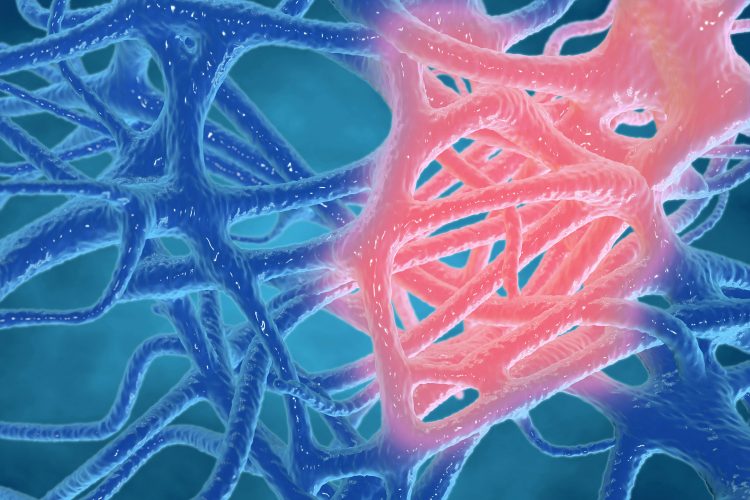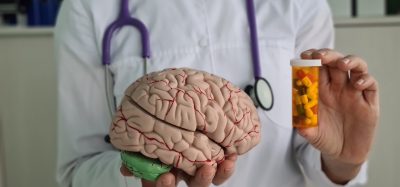New small molecule blocks immune response signalling pathway
Posted: 25 October 2023 | Drug Target Review | No comments yet
A new small molecule has great promise for the treatment of autoimmune diseases by inhibiting the proinflammatory signalling pathway.


A new small molecule named “Feeblin” has been discovered by researchers at CeMM Research Center for Molecular Medicine of the Austrian Academy of Sciences at the Medical University of Vienna, and the University of Lausanne. Feeblin inhibits the interaction of the transporter protein SLC15A4 with the adapter protein TASL. Both proteins are part of the body’s proinflammatory signalling pathways. Autoimmune disease patients, like those with systemic lupus erythematosus (SLE) could especially benefit from inhibiting the signalling pathway.
Inflammation is chronic in autoimmune diseases, which leads to severe tissue damage. Multiple complex molecular pathways participate in this process, but therapies and drugs targeting specific parts of these pathways are limited. In a previous study published in Nature, Dr Giulio Superti-Furga, Principal Investigator and Scientific Director of the CeMM Research Center, found that a new adapter protein called TASL is essential for signal transduction from the endo-lysosomal membrane transporter SLC15A4 and Toll-like receptors 7 and 9, key for innate immune defence, to the pro-inflammatory transcription factor IRF5 (interferon-regulatory factor 5). (Heinz et al, Nature 2020).
The team hypothesized from these findings that regulation of SLC15A4 and TASL may be a significant aspect of immune signalling that could be therapeutically targeted to improve SLE. Superti-Furga and his colleagues have now taken a major step towards achieving this goal, going on an initiative that builds on their knowledge of solute carriers and drug discovery.
Feeblin
In their study, the team developed a novel test method that is used to specifically monitor the presence of TASL. If TASL is not bound to SLC15A4, it is very unstable. Dr Andras Boeszoermenyi, study author and postdoctoral fellow in Superti-Furga’s laboratory, worked with the CeMM Molecular Discovery Platform to find a small molecule that regulated the stability of TASL protein and found that this was dependent on the presence of SLC15A4.
This “Feeblin” molecule turned off pro-inflammatory signalling mediated by IRF5, which was precisely what the team hypothesised. Feeblin is named in honour of the Nobel Laureate Bruce Beutler’s work on mutations in SLC15A4 signalling, as the resultant mutant mouse strains were named “feeble.”
Dr Manuele Rebsamen, a former scientist in the Superti-Furga group at CeMM and currently Assistant Professor at the University of Lausanne, said: “The results confirm the knowledge we have gained since we discovered the SLC15A4-TASL complex and imagined how to target it. This supports our belief in using Feeblin to open up new treatment options for patients with autoimmune diseases.” His team helped to reveal the compound’s action.
The Maojun Yang team at Tsinghua University elucidated the cryo-electron microscope structure of SLC15A4 in a parallel study. They showed that SLC15A4 undergoes considerable conformational changes when binding TASL. Collaborating with Superti-Furga’s team, the Yang laboratory confirmed the interaction of Feeblin with SLC15A4 and clarified its allosteric mechanism.
Project leader Dr Superti-Furga explained: “We identified this new adapter for innate immunity, TASL, which binds to SLC15A4 and is essential for the IRF5 signalling pathway, and in just three years we were able to identify a drug candidate with a previously completely unknown mechanism of action, an allosteric regulator of protein interactions.”
Leonhard Heinz, group leader at the Department of Rheumatology at the Medical University of Vienna and former leader of the Superti-Furga team, said: “There is a significant unmet medical need in lupus, and it is very gratifying to see how a mechanism we helped CeMM discover is now showing promise in the form of a compound in cells from SLE patients. We hope that this will translate into new treatment options in the coming years.” Heinz’s team validated the compound under physiological conditions.
This study was published in Nature Communications.
Related topics
Drug Discovery, Immunology
Related conditions
systemic lupus erythematosus (SLE)








